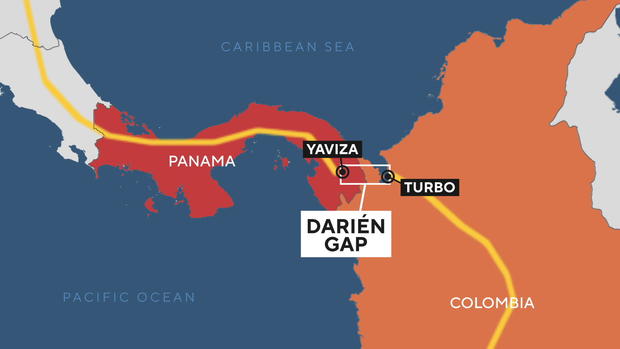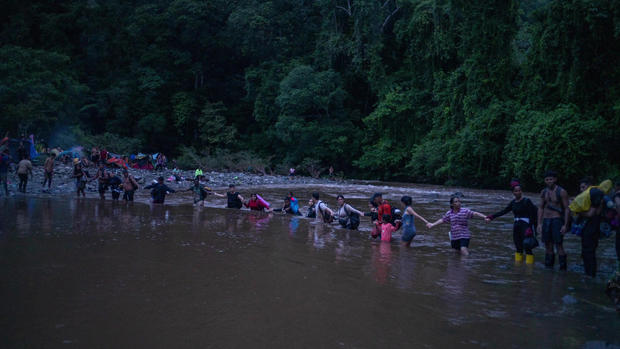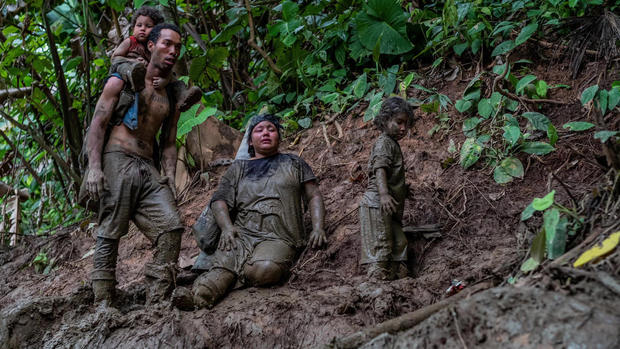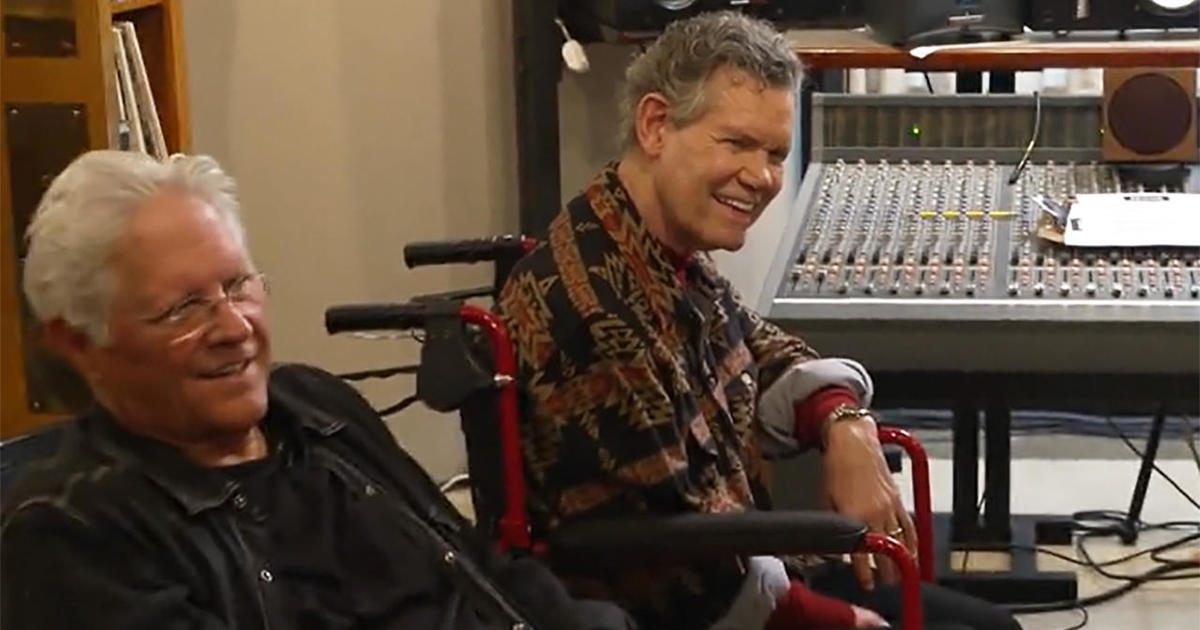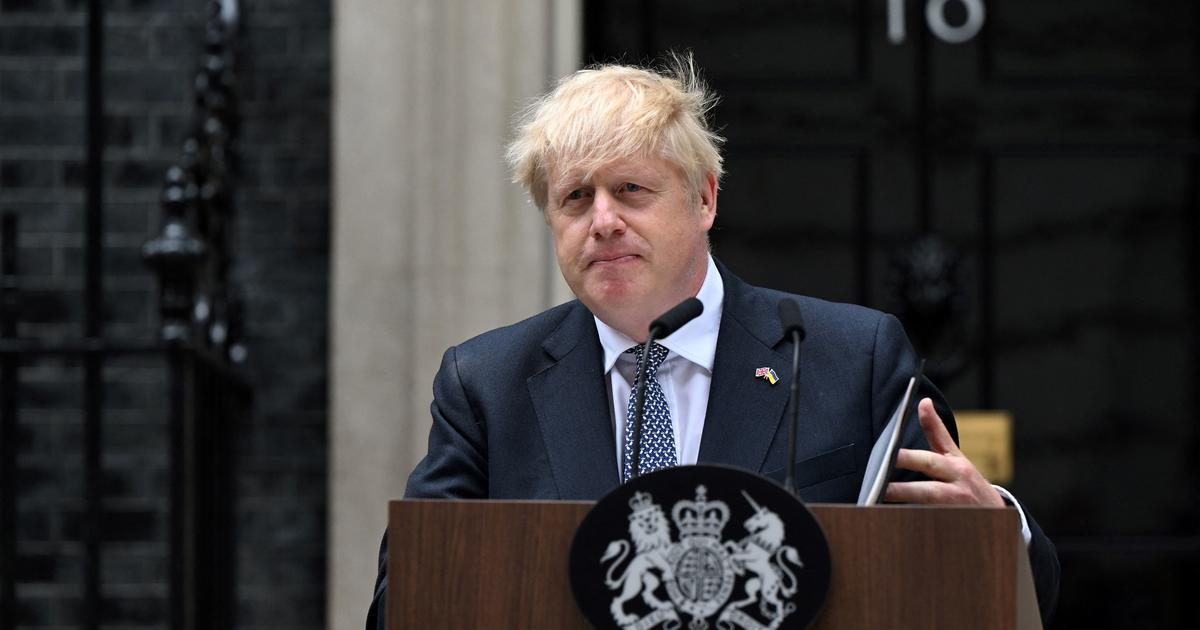Making the treacherous journey north through the Darién Gap
The Pan-American Highway is the longest road in the world. Stretching from Alaska to Argentina, its construction was once the largest international development project ever attempted by the United States. But more than a hundred years after the road was first proposed, one section remains unbuilt: the sixty-six miles of remote jungle known as the Darién Gap.
"It is the only stretch of the Americas where engineers could not build the Pan-American Highway," said Julie Turkewitz, Andes bureau chief for The New York Times. "This essentially created a barrier between South America and Central America."
Last fall Turkewitz and photographer Federico Rios followed and photographed a group of migrants on their nine-day journey through the Darién Gap. She found a route once too treacherous to build a road has become a traffic jam. "Just masses of people crossing the jungle," she said. "It was like being in line at the Statue of Liberty."
Last year 250,000 people crossed the Darién Gap – twenty times more than just a few years ago.
"You have a sort of vibrant economy of smugglers who are advertising the Darien Gap on TikTok and Facebook, which is where a lot of migrants are talking," Turkewitz said.
Acevedo asked, "What does that look like? They advertise their services, or they are trying to tell people that this is a safe way to get to the U.S.?"
"Both. They talk about how this trek is possible. They will answer people's questions. They spread a ton of misinformation about which nationalities are being allowed in."
And when they arrive in the jungle, most migrants are not ready for what lies ahead. "It can be absolutely harrowing," said Turkewitz. "You don't know what's around the next bend. You don't know how deep the river is. You don't know how slippery the rock is. A lot of people who are making this journey not only are not physically prepared, but don't have the resources to buy boots or to buy proper food or to buy proper clothes. And some of them are children. And so the sort of level of vulnerability that people are subject to is kind of hard to describe."
Alejandro Marrufo crossed the Darién last year. He said he saw families and children on the journey. "Yes, I saw people who died. Imagine you hurt yourself in the middle of the jungle. How do you get out?" he asked.
Marrufo left Venezuela in 2018. He decided to venture north after struggling for years in neighboring Colombia to earn enough money to support his children back home. "I have done all this for my two daughters," he said. "They are the reason I have lasted five years on this journey."
Runaway inflation, at times reaching as high as 10 million percent, has led to shortages of food and medicine in Venezuela. Since 2015, seven million people – a quarter of the country's population – have fled. Most have settled in countries nearby, but hundreds of thousands have made their way to the United States.
And trouble in the region isn't limited to Venezuela. COVID devastated economies across Latin America and the Caribbean, while authoritarian governments and climate change are driving millions of people to leave.
"Most people don't want to flee their homes and travel thousands and thousands of miles through seriously dangerous conditions to start over in a new country," said Tyler Mattiace, a researcher for Human Rights Watch in Mexico. "People do that because they are forced to."
Mattiace says the U.S. government needs to pay more attention to why people leave home in the first place.
Acevedo asked, "Do you think there's too much focus on the U.S.-Mexico border?"
"Absolutely, I do," Mattiace replied. "The policy towards Latin America has really ignored serious and growing human rights crises in many countries across the region, and focused almost exclusively on trying to stop migration coming north through any means possible. Those policies, first of all, don't work. The number of people who are fleeing their countries continues to grow, because these crises continue to grow. And it also has deadly consequences."
In March, a fire at a Mexican migrant detention facility near the border killed 40 people.
Mexico has seen a record number of asylum claims in recent years. More migrants are living on the streets and crowding shelters, a direct result, says Mattiace, of U.S. pressure to quiet the situation at the border.
More than a month after crossing the Darién Gap, Alejandro Marrufo made it to Mexico City. He's found a job at a local market, and can even send some money back home. He says his goal is to make it to the U.S. legally. "I don't want to enter illegally; for me, that's not an option," he said.
But with border policies constantly changing, the road ahead for Marrufo (and so many other migrants) remains unclear.
According to Julie Turkewitz, "Some people follow the rules and they get nowhere; some people follow the rules and they get in; some people don't follow the rules, and they get in. And I think that arbitrary nature is one of the things that makes people feel the most frustrated, but it's also the thing that makes them risk the journey. It's that constant hope of something better, and this idea that, you know, their kids' lives can be better.
"I'm sure you guys hear this all the time, and it's probably sweet, like cheesy and cliché, but the American dream dies hard. Even after all of this, the deportations, all of the problems that one knows exist in the United States, the power of the American dream, it's powering that journey [for them]."
For more info:
- Julie Turkewitz, Andes bureau chief, The New York Times
- Photographer Federico Rios
- Tyler Mattiace, Americas researcher, Human Rights Watch
Story produced by Mark Hudspeth. Editor: Carol Ross.
See also:
